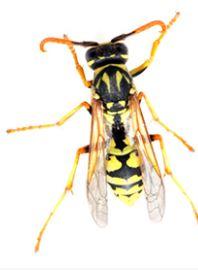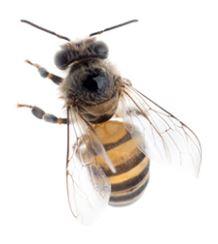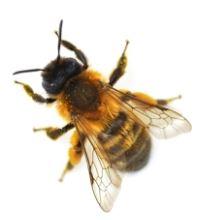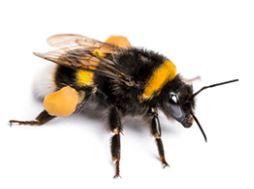The difference between wasps and bees
Many people report sightings of wasps (particularly early season April/May) which are actually honey bees or solitary bees (mortar and mining bees) and the service does not carry out treatment for these insects.
If you are requesting a treatment for wasps please be sure that the insects spotted are wasps and not bees as you will be charged for a false call outs.
| Wasp | Honey Bees |

|

|
| Masonry Bees | Bumble Bees |

|

|
Bees are often confused with wasps because they have a similar shape. However, wasps have distinct yellow/black bands around the abdomen whereas bees have a more non-descript light brown/brown-yellow colour. Bees tend to be 'hairy' to allow pollen to be gathered more easily whilst wasps tend to be bald and shiny in appearance.
Honey bees are social insects and live in a nest which may contain several thousand workers. Unlike wasps and bumble bees, the honey bee's nest survives for many years.
If you are unsure as to whether you have a wasp's nest or bee's nest you should look carefully at the brickwork to see if they are going in or out of a single hole/air brick or investigating several holes over an area wider than one foot.
Wasps will use a single hole but masonry bees will investigate several. A further test is whether or not the activity continues on cold overcast days or just warm sunny days. Masonry bees will only be active on sunny days.
Although honey bees are capable of stinging, they are generally not aggressive and will not sting unless provoked. Bees should, preferably, be left alone but if you wish further advice on their removal you should contact a beekeeper or a pest control company.
For further information please refer to the Scottish Beekeepers Association (SBA) website and their The Wild Bees of Scotland Identification Guide. If you have wasps or bumblebees, then please refer to the SBA main Frequently Asked Questions page.
